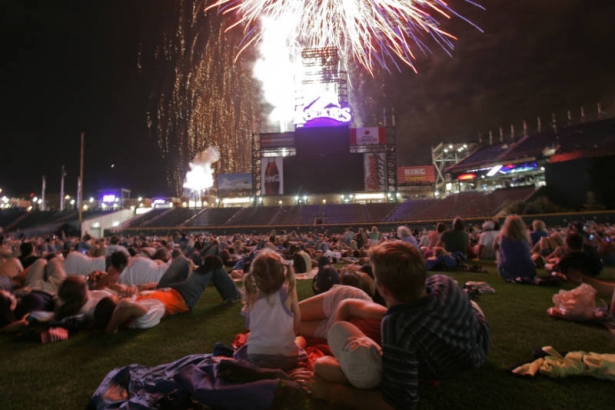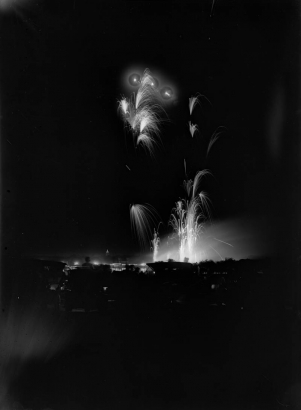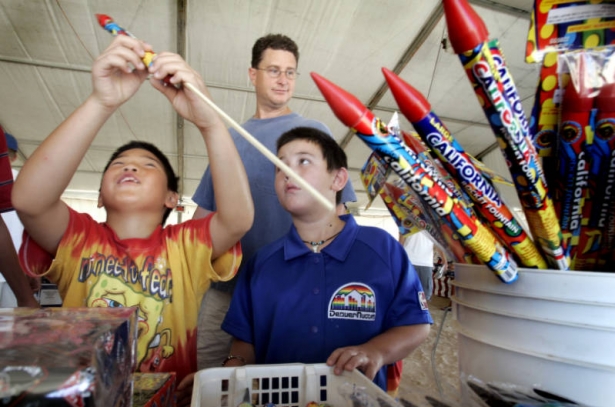If you ask me, “safe and sane” is not a phrase that I readily associate with the Fourth of July, a holiday regularly celebrated through barbecues, booze and fireworks. However, in perusing published descriptions of past celebrations in Denver, my eyes caught on that exact phrase, repeated over and over. Clearly, this meant something to readers at the time. Through further research, I learned that this phrase was essentially the rallying cry of a major movement, one that pushed for safer celebrations and made the Fourth of July the holiday that we know today.
The Safe and Sane movement started in response to the rapid proliferation of celebratory toys (including fireworks and even kid-sized cannons) which were never as “entirely safe” as advertisements claimed. By the start of the 20th century, these child-friendly explosives made the Fourth of July into something of a national public health issue. The American Medical Association began compiling casualty statistics for the nation in 1903, and by 1909 calculated an “average of 174 deaths and 4,500 wounded each year.”
Starting in 1908, four American cities implemented what they were calling “safe and sane” holidays, which included prohibition of fireworks and promotion of alternate activities such as parades and pageants. Denver joined the movement two years later, officially announcing its first “safe and sane” Fourth. The program for the day was featured in the July 2, 1910 issue of the Denver Municipal Facts, and it included a parade, concert and speaking program at the Auditorium, daylight fireworks and flags at City Park and music and fireworks that evening. The Patriotic League “hoped that everyone who spends the day in Denver will admit that the revival of the old-time festivities far outshine the more recent nerve-wracking, noisy and disastrous manner of observing the birth of the Nation.” A week later, editors pronounced the event a resounding success, with “fewer casualties than were ever recorded on July 4. Practically no arrests except for intoxication. No fires of consequence. Many visitors from outside the city. Every feature of the celebration enjoyable and everybody delighted. Little noise, much patriotism and no bloodshed.”
Denver continued to advertise its “safe and sane” celebrations through at least 1913, when it was claimed as “a greater success than ever” (Denver Municipal Facts) and a “4th joyous day...also safe and sane” (Denver Post). There were flag drills, athletic contests and a fireworks display that played for over an hour to approximately 40,000 people in City Park. In the following years, the “Safe and Sane” push slowly lost its hold in the newspapers, and in 1915, the fire chief instead offered safety suggestions to homeowners and parents in the Denver Post. Suggestions such as “Do not let your fireworks lie around exposed while you are shooting off a portion of them,” and “Do not let children, especially girls with flimsy dresses, set off fireworks without adults present,” indicate that perhaps a more laissez faire approach to fireworks was returning to the city.
Though the “safe and sane” phrase went away shortly thereafter, non-explosive activities continued and the idea of fireworks regulation resurged in the 1930s after another wave of concern at the amount of casualties. Denver fought over fireworks bans and crackdowns in 1937, 1958 and 1973, although enforcement continued to be an issue. Yet the principles of “safe and sane” have been enshrined. Today, Colorado law allows only certain types of fireworks, which neither explode nor leave the ground (think fountains or snakes), and these are often still short-handed as “safe and sane.” Some cities and counties have even further restrictions and police have hotlines to assist enforcement.
However you choose to celebrate your Fourth, we hope it is safe, at least a little sane and still very fun.




Add new comment